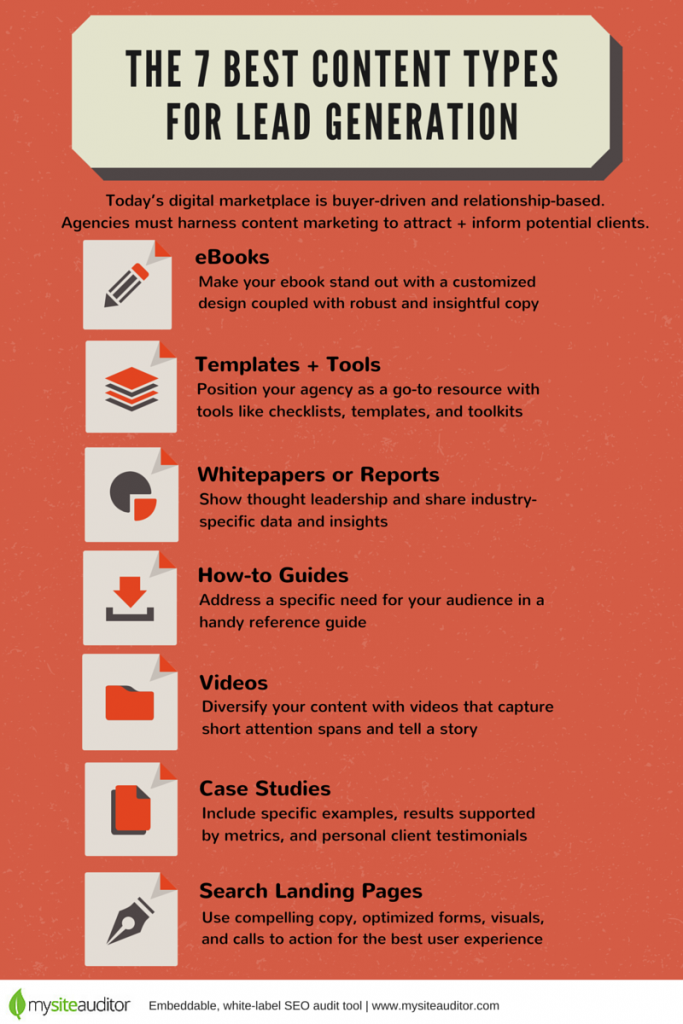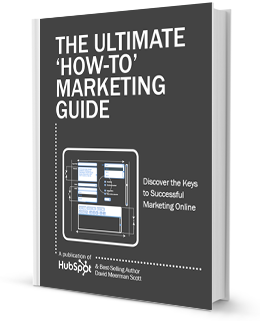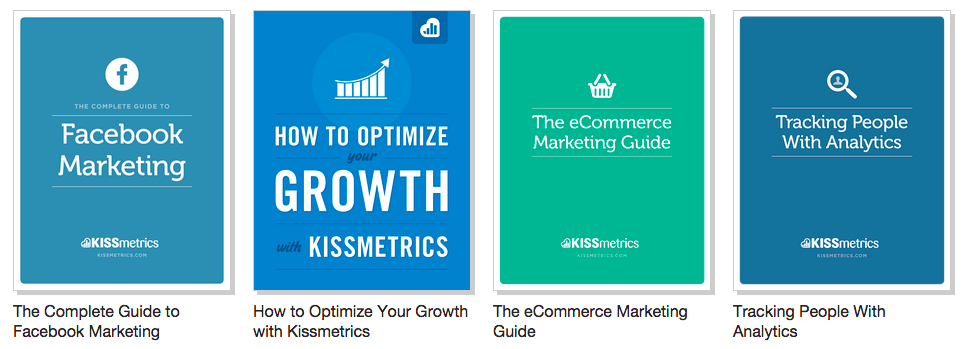- Free Download: New Web Design Client Questionnaire - October 1, 2015
- The Beginner’s Growth Hacking Guide for Agencies - September 14, 2015
- 23 Creative Content Syndication Ideas - September 2, 2015
Today, consumers spend an average of 79 days conducting online research before buying.
This means SEO, web design, and digital marketing agencies need a content marketing strategy that provides consumers with the answers they’re searching for while simultaneously generating leads to fill their agency’s sales pipeline.
The marketing landscape has changed. Where agencies used to be able to rely on advertising and direct outreach to consumers, today’s digital marketplace is more buyer-driven and relationship based, meaning agencies must harness content marketing to attract and inform potential clients.
But what are the best content types to generate leads?
In this post, I’ll discuss the top 7 best content types for lead generation, as well as how to leverage this content in lead generation campaigns for the best results.
1. Ebooks
Ebooks provide the opportunity to deliver targeted content that’s easily digestible but more substantial than a blog post. There are really two main considerations when attempting to use an ebook as a lead generation tool for your agency: the quality and topic of your ebook, and how you promote it.
Make Your eBook Stand Out
Ebooks are not a little known secret to marketers – they’re everywhere, in every industry, on every topic. In order for your ebook to standout, it will require a lot of effort by your agency team – but the time and resources investment will pay off with the amount of leads you’re able to generate.
Here are some tips for making your ebook stand out:
- Go beyond your audience’s expectations
Focus on creating a comprehensive, thorough guide on your chosen topic so that a user will think “this resource is all I need to know everything about [your topic].” Prioritize your reader’s needs over your own – after all, once they’ve downloaded your ebook, you’ve achieved your lead generation goal. Include lots of detail and insightful copy to make your ebook robust and lengthy (5,000-10,000 words), and add links to useful resources even if they’re not on your own website.
- Use a customized design
Capitalize on your agency’s in-house designer or outsource the project to a qualified freelancer, but don’t skimp on layout design. Your ebook should be well-formatted so that it is visually engaging, easy to read, and maintains the reader’s attention. The level of design of an ebook can easily make it stand apart from designs that clearly involved little effort.
How to Promote ebooks on Your Site:
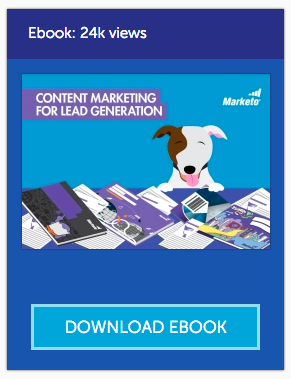 Use a visual call to action at the end of or within your blog posts
Use a visual call to action at the end of or within your blog posts
Here’s an example of a visual call to action Marketo uses to promote an ebook. The key to generating leads is the visual – it’s much more enticing for a user to click on a well-designed button than a text link. Plus Marketo uses social proof (the 24k views) to further convince users of the ebook’s value.
Other ways to promote your ebook:
- email marketing
- slide-in sign up form
- dedicated landing page
- social media advertising
2. Templates and Tools
Providing your potential leads with free templates and tools in exchange for their email is an excellent way to not only gain a lead, but also position your agency as an expert and go-to resource. For most agencies, giving your potential leads tools to help them do the things you offer as services in-house might seem counterproductive, but for a small company, downloading a tool and attempting to utilize it with a tiny team could make them realize just how much they need your agency’s help.
5 types of templates or tools to consider creating:
- Checklists
Use free tools like Checkli.com to make free checklists. They are relatively easy to produce while still being valuable to consumers. Create checklists related to your services and add a branded header and clean layout.Here’s an example of MySiteAuditor’s SEO checklists:
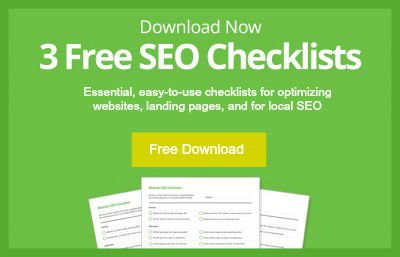
- Cheat sheets
Similar to checklists, creating quick cheat sheets is pretty simple. Keep them short to 1-2 pages and focus each on a highly specific topic. - Toolkits
Toolkits can be a compilation of a number of resources packaged into one download, whether the content was produced by your agency or is a roundup of useful content and tools from the web. - Slideshares
Slideshare presentations are a quick, visual way to share knowledge and tips for your potential leads. Plus, they’re a versatile marketing tool – your agency gains a solid backlink from slideshare, and you can embed the presentation on your own blog and easily share it on social media. - Editable templates
Downloadable, editable templates are valuable tools to customers, and don’t require too much work on your agency’s part. Think about what would provide value to your audience, and give them a starting point to customize the template to their liking. For example, MySiteAuditor offers agencies an editable SEO questionnaire that they can download, white label, add their own questions to, and use when interviewing new clients.
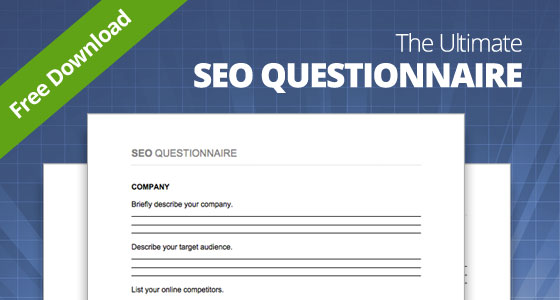
3. Whitepapers or Reports
This type of content is especially good for more B2B focused agencies that aim to show thought leadership and share industry-specific data. Most often whitepapers and reports aim to feed a specific need in an industry, and should be authoritative, fact-based, and insightful.
Elements of a successful whitepaper:
- Length
Users expect whitepapers to be more than a guide or ebook. Typically whitepapers should be at least 10 pages in length. - Good Data
Draw concise conclusions from relevant data, and use statistics and examples to drive your message. - Focus
Know the purpose of your whitepaper, and what takeaways you want your readers to have. - Layout
Include graphics such as charts and graphs to visualize data and break up dense text. - Authority
Involving industry leaders in your whitepaper via quotes lends extra credibility, and helps support your message and data. - Professional Tone
Whitepapers are professional and serious in tone. Pay special attention to grammar and accuracy.
RELATED POST: How to Run a Successful SEO Company – Podcast
4. How-to Guides
A how-to guide is great downloadable content that can help your agency address your potential customer’s needs. How-to’s are some of the most popular content on the web, and allows your agency to provide valuable advice in a handy reference format.
If you haven’t gathered this by now, design is important. This applies to how-to guides as well. How-to guides should be succinct and to the point, easy to follow, and punctuated with visuals.
Examples of great how-to guides:
Hubspot’s Ultimate How-To Marketing Guide:
Kissmetrics’ library of how-to marketing guides:
5. Videos
Consumers have shorter attention spans than ever, and as more and more content is published to the web every second of every day, the competition to spread your message and generate leads grows. Videos are a great way diversify the types of content your agency produces beyond written content, and a way to spark the interest of a lead in a new way if they’ve skimmed over your ebooks and other resources.
RELATED POST: How to Make Professional Videos on a $500 or $1,000 Budget
6. Case Studies
Case studies target buyers at the bottom of the buying cycle – these potential customers are ready to make a purchase, and are doing their final due diligence to decide whether to go with your agency or a competitor. It’s great to include testimonials on your website to attract customers, but also offer a downloadable case study to generate leads that focuses on one particular client and what you helped them achieve. Great case studies include specific examples, results supported by metrics, and testimonials from your client.
7. Search Landing Pages
Hopefully your agency is already implementing a strategic SEO plan that is driving valuable organic traffic to your website. But successfully generating traffic from high-volume keywords is only half the battle. In order convert your website visitors to leads, you must pay careful attention to the content of the pages users are landing on when they enter your website.
Here are a few of the most important elements of a search landing page to consider:
- User experience
Are visitors able to easily navigate the content on the page and find the information they’re looking for? - Calls to action
Do you utilize buttons with strong calls to action that urge a user to take a specific action? - Compelling copy
Does the copy on the page read well and resonate with your users? - Visuals
Do you break up heavy text with images and/or graphics to make the page visual? - Optimized forms
Do your forms only include necessary fields, and are they placed in a prominent position on the page?
How to use content effectively in lead generation campaigns
Map content to buyer stages
Understand that not all of your potential leads are at the same stage in the customer buying cycle when they visit your agency’s website, and therefore have different needs to be met. Each of these 7 types of content I’ve listed here can be mapped out to different buyer stages and strategically targeted to answer different questions for your visitors in order to generate the most leads.

Identify content gaps
Once you’ve implemented a content marketing plan and can map out your existing and new content to the customer buying cycle, identify where content gaps might lie, and fill them. Ensure that your agency can answer customers’ questions at each stage of the funnel via a piece of content, and gate the content at each stage to capture leads.
Experiment with content
Don’t be afraid to experiment – your agency can create comprehensive buyer personas to help inform your content campaigns, but ultimately you won’t know what truly resonates with your audience until you produce and measure different types of content. Be creative, and adapt your strategy to what works, and what doesn’t, for your particular audience.
Biggest mistakes agencies make with content for lead generation
- Creating bad content
Here are 10 ways to make sure your content doesn’t suck. - Failing to promote content
Leverage all marketing channels to promote your content for lead generation. And, don’t be afraid to promote over time – say a six month period – or re-promote older content.
What content types have helped your agency generate the most leads? Why were you successful? Share with us in the comments!

